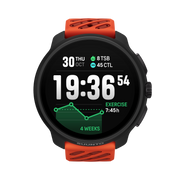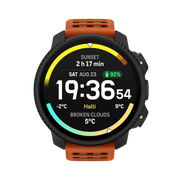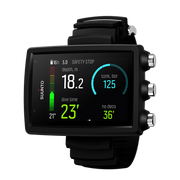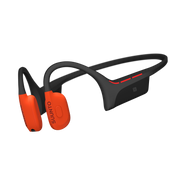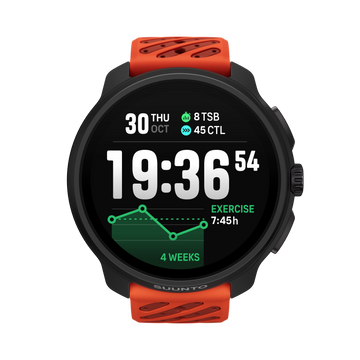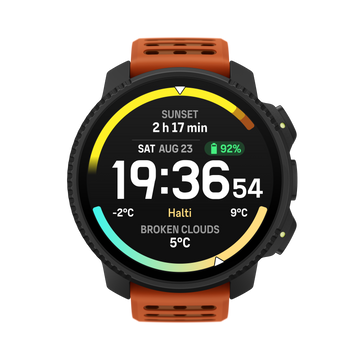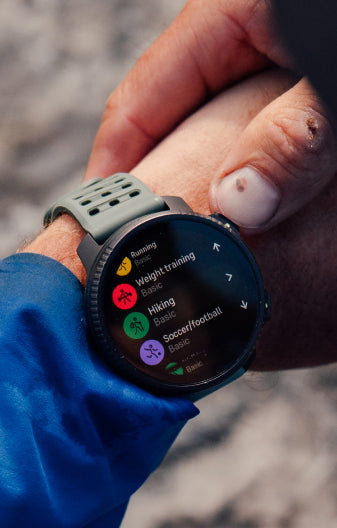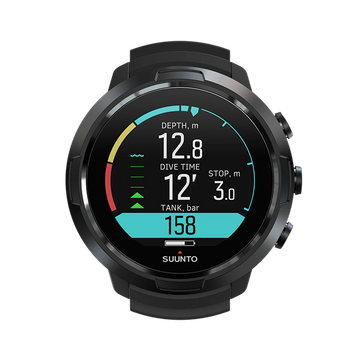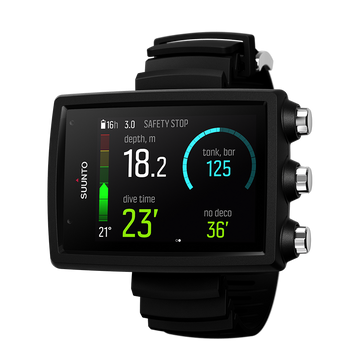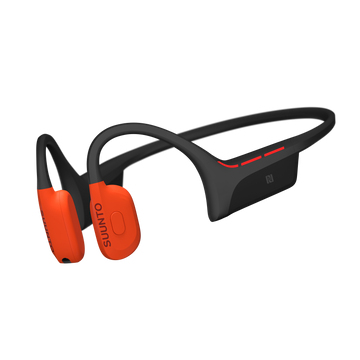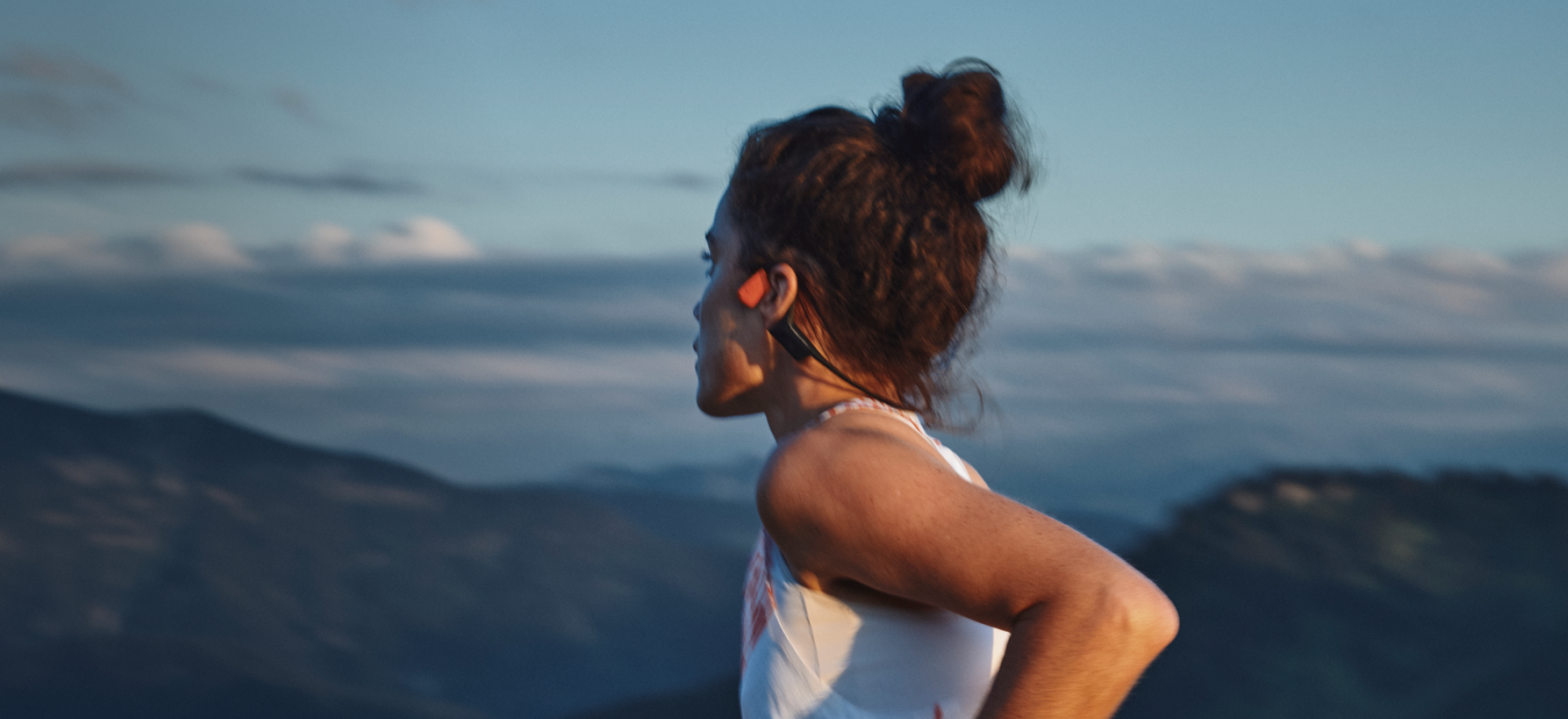

Suunto-blogg
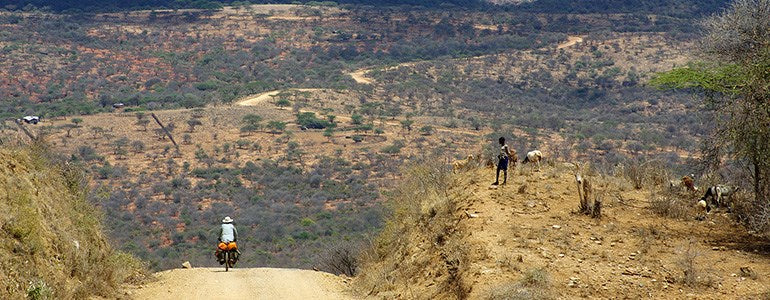
The most bicycle-friendly countries in the world are …
In this third part of our series* about them, nomadic globe-pedalling cyclists Pierre Bouchard and Janick Lemieux tell us which countries were the most bicycle friendly!© nomadesxnomades.com
After cycling the equivalent distance of four times around the planet, Canadians Pierre Bouchard and Janick Lemieux are in a unique position to say which countries are the most bicycle-friendly.
They’ve cycled across Asia, around the Pacific Rim of Fire, down and across Europe, through Africa, all around North America, even through tiny Pacific Islands – about 60 countries in total.
Click for part one and part two of the series!
© nomadesxnomades.com
Mostly their nomadic journeys have been enjoyable, with few negative experiences. They did, however, get held up at gunpoint by a bandit in Mexico. Crossing from Tibet to Nepal, they were blocked in a narrow gorge by a 15 km avalanche. Roasting in 45° C in Sudan also proved threatening!
It’s important to pay attention to potential safety issues before and during the journey, Pierre says.Which people in the world were the most friendly and helpful?
For a long time, Russians topped our list of the most hospitable people until we set wheels in the archipelago of Vanuatu. More recently, Jordanians went regularly out of their way to support us, meet our needs and accommodate us.
© nomadesxnomades.com
Which places were the most bicycle-friendly?
Japan: it's go to be be international bike touring’s best kept secret!Western USA’s Pacific Coast Highway: incredible cycling infrastructure, from exclusive and cheap campsites to a simple and clever flashing light safety system warning motorists upon entering a tunnel there is a cyclist inside – this should be standard everywhere!Rwanda: with its low traffic roads lined by wide shoulders and filled with legions of cyclists, most of them carrying huge loads!Norway: for its exquisite road network and very friendly “Allemansrett” law that allows travellers to camp for free virtually anywhere. Besides respecting private properties and observing the leave-no-trace code of ethics, this bill stipulates that campsites have to be at least 150 m from any inhabited building and that two consecutive nights is the maximum time allowed. It opens quite a realm of possibilities!This map shows the NOMADS² cycling odyssey. © nomadesxnomades.com
What have been challenging places to ride through?
Based on the first 20 months of our most recent expedition, the NOMADS² cycling odyssey:Europe’s Schengen zone: only 90 days per six months to explore that zone? Come on!Egypt: security and police escorts.Sudan: In July – sooooooooo hot! 45°C and sometimes even hotter in the shade!Ethiopia: hostility towards visitors travelling slower than 10km/h. Every time we would climb – and there are some of the world's most beautiful mountain ranges there – locals, especially children, would follow us for a few kilometres, consistently begging and throwing stones at us for not giving. We were even ambushed a few times. This has also been widely reported by other “slow travellers” – we're still puzzled!© nomadesxnomades.com
Tell us about cycle touring in Africa?
Cycling in Africa has been a great adventure, exactly as one expects this continent to be. The roads have been better than anticipated as Chinese road building companies have been frantically paving Africa’s roads for more than 10 years. Of course, if one wants to leave the pavement, the continent offers tracks big and small. Away from Cairo and Nairobi, most roads have been surprisingly quiet with most users being on foot or bicycle. On top of breath-taking landscapes, busy rural life, age-old traditions and surreal animals, Africa is clean and peaceful, smiles and greetings never held back.
*This concludes our three part series on the Pierre and Janick. In part one and part two they explain their efforts to learn about nomadic peoples and what it takes to cycle all over the world!
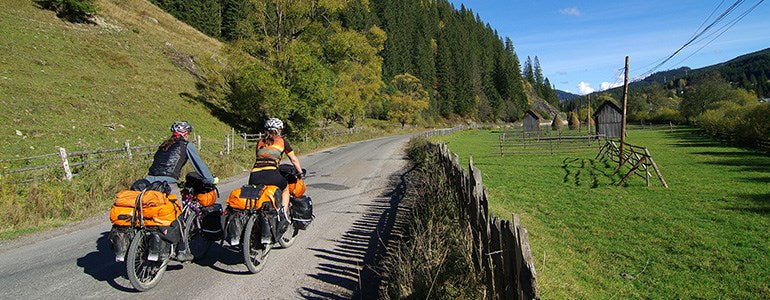
The art of cycling around the world
Nomads Pierre Bouchard and Janick Lemieux have cycled all over the world, covering an equivalent distance of four loops of the planet. In this second instalment of our three part series*, we asked them about daily life on the road. © nomadesxnomades.comCycling from Quebec to Miami in the summer of '89 was Canadian Pierre Bouchard’s first long distance tour. He calls the 4000 km journey his “L’initiation” into bicycle touring. “I came back hooked and convinced that the bicycle is the ultimate conveyance for overland journeys,” he says. “The reasons are many: the autonomy and freedom it provides, the fact it’s an environmentally sound means of transportation, it keeps one very fit, and provides a very intimate connection with our surroundings, whether landscapes, flora, fauna or humans!” Since his “L’initation”, Pierre and his partner Janick have cycled through more than 60 countries in the Americas, Europe, Asia and Oceania and Africa. They have mastered of the art of continental bicycle touring. We asked them about their daily life on the road.
Click for the first part of the series!
© nomadesxnomades.com
How has bicycle touring changed since ’89? There’s been many changes, especially the improvement of the equipment to travel on bikes. From outdoor and camping innovations to bikes specifically designed and crafted to haul all the necessities to roam continents. Lately, with the advent of fatbikes, a whole realm of wild and remote terrain has become accessible. © nomadesxnomades.comWhat does an average day on the road look like for you? Unless we're in hot deserts, we're slow risers. I usually get up first and ignite the stove to prepare hot drinks and porridge. We then start to pack up, a process that takes a couple of hours before we then hit the road. Depending on conditions and how scenic the landscape is, we cover anywhere between 40 to 120 km a day, averaging about 80 km. On expedition, taking the time to hike-trek-climb, write and immerse ourselves, we cruise about 1,000 km per month.
© nomadesxnomades.comHow much do your bikes and gear weigh? Janick carries about 25 to 30 kg and I carry between 40 and 45 kg. It fluctuates with the amount of water and goods we need to carry. We're no minimalists. As this is a form of nomadism, our way of life, we'd rather make ourselves comfortable and ready to face any eventuality.
© nomadesxnomades.comHow do you navigate and keep track of your daily efforts? On the road, our Suunto Ambit 3 Peaks play the role of dashboards and control panels. They record our daily pedal strokes and tons of useful data like altitude profiles, ambient temperature. For sketchy passages, like crossing into Ethiopia from Kenya via the Lower Omo River Valley and Turkana Lake over shifting desert tracks, we used our Ambits to navigate, having loaded them with the .gpx route a fellow bike traveller previously recorded and passed along over e-mail. With the impressive battery life, along with our Goal Zero solar power charger, we managed to keep them going for the last 600 days spent on the road, from the onset of our NOMADS² cycling odyssey.
© nomadesxnomades.comHave you ever had a problem with your bicycles in the middle nowhere? Of course! We always carry all the tools needed to open and adjust each of the components and carry crucial spare parts: tires, tubes, spokes, cables, drive train parts (chain, cassette and chain rings), brake pads. Breaking a rim is the only mechanical breakdown that can bring our caravan to a halt; we either have to walk or wait for assistance in order to move on!
© nomadesxnomades.comIs finding food and water sometimes difficult? Yes indeed! Thinking of our panniers as pantries, we always store and carry extra food. We spend a lot of time and effort getting info about the stretches of road ahead, especially with regards to availability of food and water. If we can collect water along the way we can usually last about seven to eight days without resupplying. If we need to carry our water, up to 30 litres between the two of us, we can last out there some three to four days – unless we’re in Sudan during July and both need to drink 10-12 litres a day!
© nomadesxnomades.comAny advice for someone doing his or her first bicycle tour? Make sure your bike is well adjusted to your body (seat, handlebars and seat post). Prioritize simplicity, sturdiness and durability. Don't hesitate to invest in high-quality carrier racks, generally made out of steel (chromoly). And most importantly, planning is great but set a departure date and ready or not, go – it'll all work out! Trust the road! *Stay tuned for our third instalment about the Nomads, and find out which countries in the world are the most cycling-friendly!
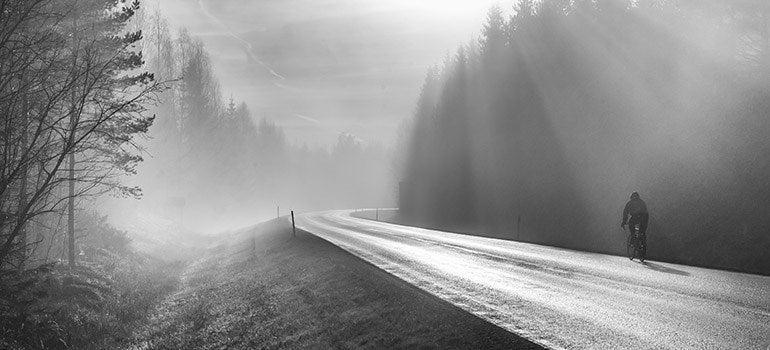
A FIVE-DAY BIKE RIDE AS A SINGLE FILE – WITHOUT RECHARGING THE AMBIT3 PEAK
Kimmo Ohtonen, a journalist at the Finnish Broadcasting Company YLE, took part in a Finnish charity event called “Red Nose Day” and rode his bike from Rovaniemi at the Arctic Circle to Tampere in the south of Finland. During the five days he managed to raise 72.603 euros for the children in the developing countries.
Kimmo tracked his entire journey with his Suunto Ambit 3 Peak. He even wore the heart rate belt while sleeping and showering.
The entire five-day-ride was tracked as a single file without pausing the recording or recharging the battery. To make this possible Kimmo had optimized his watch settings: he set the GPS accuracy to ‘ok’ and the recording interval to 60 seconds.
See Kimmo's 108-hour cycling move
Learn more about optimizing your Ambit’s battery life
Click here to see special deals on Suunto Ambit3 watches
Images by: Sebastian Dannberg

7 spring training camp tips for triathletes
Top triathlete Åsa Lundström shares 7 tips to help you get the most from your spring training camp. © OrcaSuunto athlete Åsa Lundström has been putting in 35-hour training weeks at a spring training camp at the Playitas Resort on the Canary Islands. She came fourth at the recent South Africa Ironman, qualifying herself for the World Championship in Kona, Hawaii this October – her main goal this year. Åsa says going to a spring training camp somewhere warm allows people from colder climes to boost their training volume to prepare for the coming season. “Most long distance triathletes have the Kona Ironman as their main goal and in order to elevate our base level we need to have a big training block and a spring camp is a really good way to achieve that,” Åsa says. “Most triathletes want to boost their cycling at spring camps because that's the hardest discipline to train at home during the winter months.”© Orca
Don’t overdo it
When you’re at a camp there are so many motivated people and groups it’s easy to get carried away. If you plan to start out with a three-hour ride and you go with someone who wants to do a four or five hour ride, it's very easy to get pulled along with them. Unsurprisingly, it’s not uncommon for people to train too hard and crash their immune system and then go home, catch a cold and not be able to train for two weeks. Being patient and not getting carried away is probably the hardest part of being on a camp.© Orca
Stick to your plan
Create a training plan for the camp with your coach before you leave so you have a clear idea of what you’re going to do. This helps you to avoid overdoing it. Of course if you feel fresh and you feel strong it’s important to push a bit harder. You need that to stay motivated and to get the endorphins. But still don't get carried away and overdo it. The risk is you will hit the wall.
Rest and eat well
Most people train a lot more at a camp than they do at home. They go to boost their training. It's important to remember then that you need more sleep and to take good care of your nutritional intake by eating good quality food. At the beginning of a camp you are so filled with endorphins and energy and you’re in the warm sunshine, it’s easy to feel like you don’t need so much sleep. Even if you’re only on a one-week training camp it’s important to get eight or nine hours of sleep every night even when you feel you don’t need it.© Åsa Lundström
Take your nutrition
If you’re going to a training camp where you haven’t been before it can be difficult finding the sports nutrition you use for your training. So if you don't know what you can get there, make sure to bring enough of your own.
Find a buddy
Training with a buddy, or even just around other triathletes, means you can push yourself to a higher level. If you train for many hours it’s always good to have a partner. If you have someone who is at your level, it’s a constant source of motivation because you will be racing against these people.
© Åsa Lundström
Foam roll and stretch
I go to the gym to workout, stretch properly and do foam rolling. I do it as prevention. A light massage half way through a camp is a good thing. Avoid deep massage because that can make your muscles sorer and they might need a rest afterwards.
Focus on volume
Most people go on a spring training camp because they can’t get the volume in at home because it’s too cold. So the natural thing is to do the volume training, which is cycling and running. Take the opportunity to do longer sessions. It’s also a good time to practice open water swimming if you’re somewhere where the water temperature is nice. Don’t focus on technique, but build strength and practice navigating.
Lead image: © Orca/Gines Diaz

Meet the nomad who has cycled around the globe four times
Pierre Bouchard began cycle touring in 1990 and has since travelled all over the world, covering the distance of four loops of the planet. In this first of three instalments* about the “Nomads” we asked him what he’s learned.
© nomadesxnomades.com
Pierre Bouchard’s life on the road began with sage advice from a philosophy professor; “the ideal would be to travel the world and account for it,” the professor suggested during a lecture. Then a philosophy student, Pierre says as soon as he heard this his “mind flew right out the window”.
Shortly after, he dropped out of university and set out to study what René Descartes called “the great book of the world”. He pedalled more than 71,000 km through 18 countries in the following seven years. His partner Janick Lemieux joined him on the road in 1997 and together they’ve cycled through more than 60 countries in the Americas, Europe, Asia and Oceania – and currently Africa.
Their expeditions are about far more than seeing sites and sampling foreign food, however. The couple approach their journeys as acts to build understanding and solidarity between distant cultures. They are particularly interested in remote and nomadic cultures and have given hundreds of lectures about their findings and experiences.
© nomadesxnomades.com
“By sharing what we learn, and by informing our hosts on the road about our own culture, we contribute to a sense of humanhood which is the basis for genuine solidarity!” Pierre says. “We‘ve learned that we all have the same needs and are all subjected to the same existential conditions, so why not help one another?”
“People are very curious and somehow don’t feel threatened by strangers on loaded bikes. They come close, greet us and inquire about the obvious journey we’re on which often triggers a reflex of human solidarity where invitations for a drink, meal, shower and shelter fuse.”
© nomadesxnomades.com
Through 1999 to 2009, the couple circumnavigated the Pacific Rim, riding along its tectonic faults and ridges, pedalling from one active volcano to the next. Travelling clockwise from Vancouver, they cycled about 60,000 km in six years, using 300 volcanoes to create their itinerary and hiking to, around or to the summit of around 60.
“One of the advantages of having a theme to explore is that they take you to places you would never imagine – you don't usually think of Vanuatu or the Solomon Islands as your typical bike touring destinations, but they rock,” Pierre says. “The Ring of Fire quest took us to some of our planet's wildest spots and warmest people.”
© nomadesxnomades.com
Pierre and Janick are currently cycling through Tanzania, having made it more than half way through their 35,000 km NOMADS² cycle tour. The three-year expedition is focused on deepening their understanding of the nomadic way of life. Starting in Norway, they cycled north to Lapland, and then south down through Eastern Europe, the Middle-East and the east of Africa. Along the way they have contacted various nomadic peoples, such as the Sami in Scandinavia, the Roma in Europe, and other tribes, seasonal herders and hunter-gatherers. After cycling 21,000 km in 21 months, they’re pausing their journey shortly in Tanzania, and will return after a 15 month break to complete the journey north up the west of Africa to Morocco.
© nomadesxnomades.com
“We have learned that being a nomad is becoming more and more difficult because, due to the population explosion, the world is getting crowded,” Pierre says. “The race to exploit natural resources by the more powerful often pushes nomads out of their natural territories to which they often have no legal deeds. There is also development playing a role, with new school-going nomad generations often not willing to continue to live simply like their parents and ancestors. For now, nomadism is fast disappearing.”
“Nomads are in symbiosis with nature and for this reason, it would be good for the planet if more of us were to adopt the way of the nomads. They definitely inspire us to have a lower and sustainable impact on the environment and its resources!”
*Stay tuned for our second and third stories about the Nomads, and find out which countries in the world are the most cycle-friendly!

Leadership lessons from an adventure-racing champion
Nathan Fa’avae is the captain of Team Seagate, a world champion adventure racing team. He knows both sides of endurance sport – individual and team competition – but is renown for his ability as a team captain. We caught up with the New Zealander to find out what it takes to build a winning team. Adventure racing has taken Nathan around the world. © Nathan Fa'avaeWhite-water and sea kayaking, climbing, caving, orienteering, trail running, trekking, road cycling, mountain biking, ski touring – Nathan Fa’avae does it all. If the lifelong adventure junky isn’t doing one of the above, he enjoys taking his children on adventures in New Zealand’s stunning wilderness. The 43-year-old has been a semi and full time professional athlete for 16 years and competed in 12 world championships. Remarkably he has done so while battling a heart condition that he’s had surgery for three times. His role as the captain of Team Seagate, which dominated the adventure-racing scene for years, has earned Nathan wide respect as a leader. Any big races in 2016? I’m not sure what racing I’ll do in 2016 and beyond, if any. I’m always fit and active, I love the sport but I’ve done a lot of it. I’m an adventurer so that’s a lifestyle for me, not something I’ll stop doing.
Team Seagate has one multiple adventure racing world championships. © Nathan Fa'avae
Why do you enjoy about team competition?
With the team racing I like the fact we battle together, as a stronger united force. It’s nice to be on the start line with friends and know we’re in this thing together. I get strength and courage from that. How do you see team versus individual competition? As an individual you can control your pace to suit, if you want to ease up, go harder, whatever, but in a team you’re dictated by the speed of the team. The support and camaraderie of a team often makes the major challenges more enjoyable and achievable.
Nathan has paddled in 15 countries and many exposed situations. © Nathan Fa'avae
How do you manage with team dynamics? As a team captain, accommodating and nurturing people to get the best out of them is an important role. My strength in captaining teams is communication and composure. I place high value on open communication and not sweating the small stuff. I try to see everything in a positive light and always look for solutions to problems.
Cross-country mountain biking was his first competitive sport. © Nathan Fa'avae
How do you choose your teammates? Building a team is about matching people who will add value to one another’s skill sets. Team work and unity spirals up if you get that mix right, blending together like-minded people with similar attitudes. It’s important we enjoy being together, socially and competitively. For me personally, I tend to only race with people I truly consider friends, people I respect and trust. That’s how I choose my teammates.
Part of adventure racing is dealing with the unknown – how do you deal with that?
I think our team has always dealt with the unknown because we always expect it. In adventure racing, the thing you have not planned for is going to happen, so you need to be flexible and adaptable, roll with things and not get worried and stressed. My motto is ‘nothing can shock me’, that means when we get last minute surprises, they’re never actually a surprise.
© Nathan Fa'avaeDo teams make better decisions in the outdoors or individuals? There’s no hard and fast answer to this question. From my experience, I feel safer in the outdoors on my own. I know my limits and capabilities and act accordingly. The close calls I have seen were in groups when group culture meant they did something dangerous they wouldn’t have done as individuals. People do tend to show off in front of other people and subsequently take more risks.
